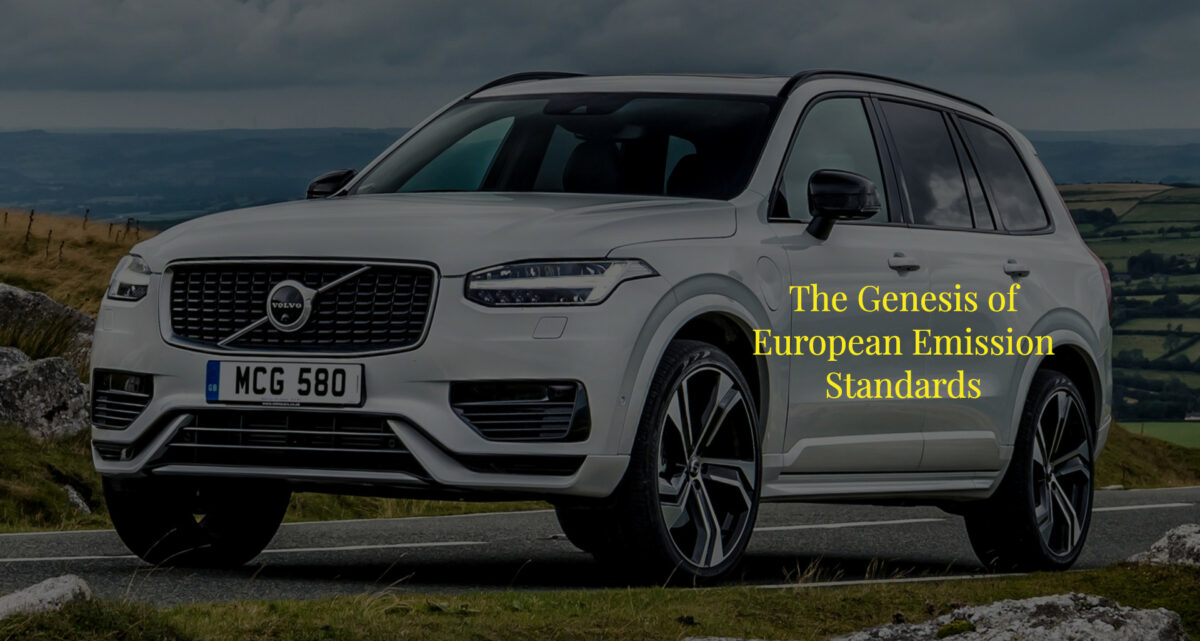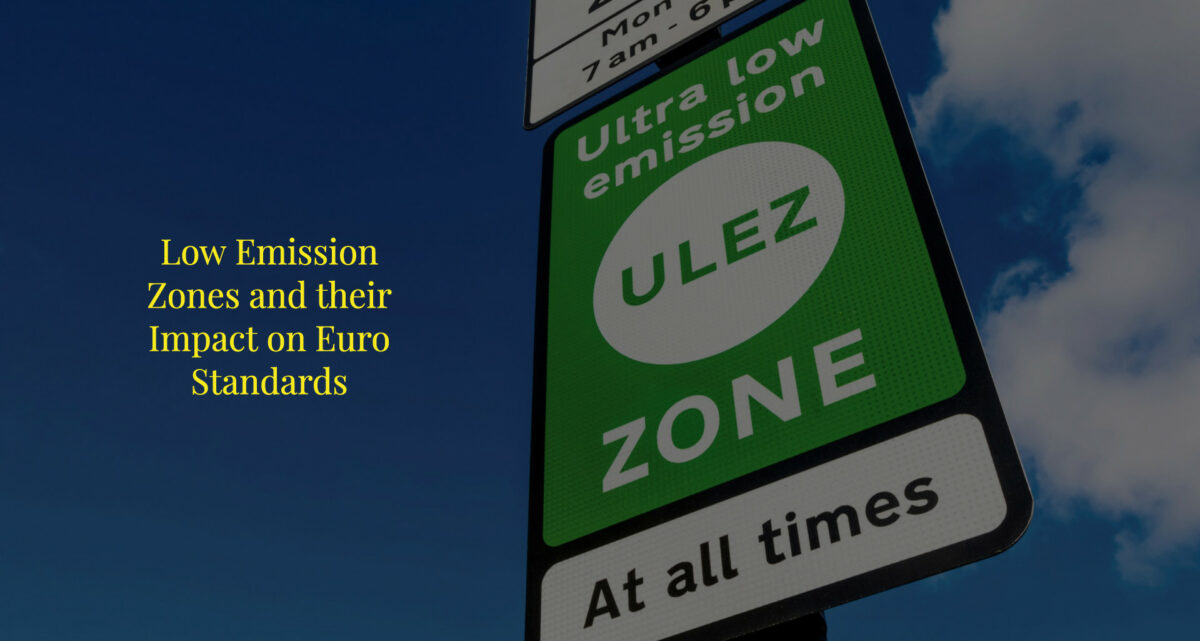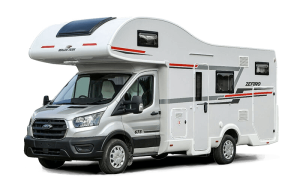Emissions from vehicles have a profound impact on our environment and public health. As the world becomes increasingly conscious of the need to reduce pollution and combat climate change, stringent regulations are being implemented to control vehicle emissions. In Europe, these regulations are known as Euro emission standards, ranging from Euro 1 to Euro 6, and they play a vital role in shaping the environmental performance of cars and vans on our roads. In this comprehensive guide, we will delve deep into the world of emission standards, providing you with the knowledge you need to understand their significance and impact.
European Emission Standards: Why Should You Read This Article?
If you’re a car enthusiast, a prospective buyer, or simply curious about the environmental impact of vehicles, this article is a must-read. We will demystify the complex world of Euro emission standards, breaking down their evolution, purpose, and implications. By the end of this article, you’ll have a clear understanding of how these standards affect the cars and vans we drive, their impact on air quality, and the efforts being made to reduce emissions for a more sustainable future.
The Genesis of European Emission Standards

The establishment of Euro Emission Standards marked a significant shift in the automotive industry’s approach to environmental responsibility. These standards were introduced by the European Union (EU) with an aim to regulate and reduce harmful pollutants emitted from vehicles, particularly cars and vans. The inception of these regulations dates back to 1970 when concerns about air quality began to gain prominence due to increasing levels of vehicle emissions.
The first set of emission limits, known as Euro 1, was implemented in 1992 for new passenger cars registered in Europe. This primarily focused on curbing carbon monoxide (CO) emissions from petrol engines, setting a maximum limit that manufacturers had to adhere to for their vehicles. Additionally, it also included provisions for diesel car exhaust emissions but allowed higher limits than those set for petrol engines.
Over time, these emission performance standards evolved significantly as technology advanced and awareness about environmental conservation grew. The progression from Euro 1 led towards tighter controls on various types of pollutants including nitrogen oxides (NOx), hydrocarbons (HC), particulate matter (PM), and CO2 emissions among others. This evolution reflected an increasing commitment by the EU towards reducing vehicle emissions and improving air quality across member states.
The First Step: Unveiling European Emission Standards (Euro 1)
The genesis of Euro Emission Standards began with the introduction of Euro 1 in 1992. This was the European Union’s first attempt to regulate vehicle emissions and set a precedent for future standards. The primary focus of this standard was reducing carbon monoxide (CO) emissions from new cars, which were known to cause significant environmental damage and health issues.
Euro 1 also established emission limits for hydrocarbons and nitrogen oxides, other harmful pollutants produced by vehicles. It applied not only to passenger cars but also light commercial vehicles, expanding its scope beyond personal transportation. Furthermore, it introduced an obligatory emission test that all new vehicles had to pass before they could be sold.
This initial standard played a crucial role in shaping subsequent regulations. While it may seem basic compared to today’s stringent rules under Euro 6, it marked a critical shift towards acknowledging and combating the environmental impact of road transport at a legislative level.
Progression to Euro 2 and Euro 3: Enhancing Emission Controls
The transition from Euro 1 to Euro 2 marked significant enhancements in emission controls. Introduced in January 1996, the Euro 2 standard focused on reducing the amount of carbon monoxide (CO), hydrocarbons (HC), and nitrogen oxides (NOx) released by new cars. This was a crucial step towards cleaner air as it set more stringent limits for petrol and diesel vehicles alike, contributing to lower emissions overall.
Euro 3, which came into effect in January 2000, took these improvements even further. The standards were designed not only to control CO, HC and NOx emissions but also introduced regulations for particulate matter (PM) – tiny particles of soot that can cause health problems when breathed in. With these advancements, emission performance standards for cars became significantly stricter than before. Diesel vehicle manufacturers had to invest heavily in technology that could meet these new requirements.
These two stages marked essential progressions within the European Emission Standards framework. They paved the way for future developments such as real driving emissions tests and low emission zones – both critical components of subsequent standards like Euro 4 and beyond. While each stage brought its own challenges for car manufacturers, they played an integral role in shaping today’s automotive landscape where environmental considerations are at the forefront of design decisions.
Advancements with Euro 4: Setting Higher Benchmarks
The introduction of Euro 4 in January 2005 marked a significant leap forward in the push for lower vehicle emissions. This new standard brought about stricter regulations, further reducing the permissible levels of harmful pollutants released by passenger cars and light commercial vehicles. The focus was primarily on curtailing the emission limits for carbon monoxide (CO), hydrocarbons (HC), nitrogen oxides (NOx) and particulate matter (PM).
Euro 4 also heralded an important shift towards real-world driving emissions testing. Prior to this, laboratory tests were used to assess a vehicle’s compliance with emission standards. However, these tests often did not accurately reflect everyday driving conditions or behaviours, leading to discrepancies between lab results and actual on-road performance. Under Euro 4, more realistic testing methods were adopted which provided a better representation of typical driving situations.
While each successive Euro standard has been progressively tighter than its predecessor, it is important to note that they are not retroactive; older vehicles are not required to meet newer standards once they have been introduced. Therefore, even though much progress was made with the implementation of Euro 4 – particularly regarding NOx emissions from diesel vehicles – many cars on the road today do not adhere to these enhanced benchmarks due their production date preceding this standard’s enforcement.
The Leap to Euro 5: Tightening Emission Limits
The progression from Euro 4 to Euro 5 standards marked a significant tightening of emission limits. Introduced by the European Commission in September 2009 for new car approvals and phased in for all new registrations by January 2011, this standard aimed at further reducing harmful exhaust emissions – particularly those contributing to air pollution such as Nitrogen Oxides (NOx). This was especially pertinent given the growing awareness of the detrimental health impacts associated with poor air quality.
One key aspect of these tightened regulations under Euro 5 was a substantial reduction in NOx emission limits for diesel vehicles. While petrol cars had already seen stringent controls on NOx under previous standards, diesel vehicles were now required to significantly lower their output. In fact, compared to its predecessor (Euro 4), the allowable limit for NOx emissions from diesel engines was cut down by more than half – from 250mg/km to just 180mg/km.
In addition to stricter NOx limits, particulate matter (PM) emissions also faced tougher restrictions under Euro 5. For both petrol and diesel cars alike, PM levels were capped at a maximum of just one particle per cubic centimetre – an impressive feat considering that many older models would have been far above this level prior to these changes being introduced. The introduction of these tighter constraints not only demonstrated progress towards cleaner driving but also acted as an impetus for manufacturers across Europe and beyond to innovate and develop cleaner vehicle technologies.
The transition from Euro 4 to Euro 5 also saw the introduction of a new test procedure, known as the Worldwide Harmonised Light Vehicle Test Procedure (WLTP), replacing the previous New European Driving Cycle (NEDC). This was aimed at providing more realistic and representative measures of emissions and fuel consumption.
• The leap from Euro 4 to Euro 5 marked a significant tightening of emission limits, with an aim to reduce harmful exhaust emissions.
• Introduced in September 2009 for new car approvals, it became mandatory for all new registrations by January 2011.
• A key focus was on reducing Nitrogen Oxides (NOx) emissions – major contributors to air pollution.
Under these revised regulations:
• Diesel vehicles faced stricter NOx emission limits. Compared to its predecessor (Euro 4), the allowable limit for NOx emissions from diesel engines reduced by over half – from 250mg/km to just180mg/km.
• Both petrol and diesel cars were subjected to tougher restrictions on particulate matter (PM) emissions. PM levels were capped at one particle per cubic centimetre – significantly lower than many older models pre-Euro-5 standards.
Other notable changes included:
• The implementation of WLTP replaced NEDC as part of efforts towards achieving more accurate measures of emissions and fuel consumption.
These stringent constraints not only indicate progress towards cleaner driving but also serve as motivation for manufacturers worldwide:
• Manufacturers are now driven towards innovating cleaner vehicle technologies that comply with these tighter regulations while maintaining performance standards.
The Current Standard: Unpacking Euro 6
Euro 6 is the current emission standard that all new cars must meet. This was introduced in September 2014 to reduce harmful car and van exhaust emissions, particularly diesel ones which are known for their high particulate matter content. Euro 6 significantly tightened the limits for carbon monoxide (CO), hydrocarbons (HC), nitrogen oxides (NOx) and particulates compared to its predecessor – Euro 5. It also introduced a limit on particle number which was not present in previous standards.
The main focus of Euro 6 has been reducing both diesel NOx emissions and petrol/diesel particulates due to their detrimental impact on air quality. For instance, under this standard, diesel vehicles have had their NOx emission levels slashed by more than half from what it used to be under Euro 5 – from a permissible limit of about 180mg/km down to just around 80mg/km. Also, while previous standards only measured the mass of particles emitted by vehicles, Euro 6 measures the number of particles as well; this move aimed at capturing smaller particles that might still be hazardous despite being low in mass.
While these improvements are significant steps forward in controlling vehicle emissions, they don’t mean an end-all solution for environmental pollution caused by vehicular traffic. There’s still room for further reductions especially given growing concerns over real-world driving conditions where actual emission levels may exceed those recorded during laboratory testing procedures prescribed by European Commission regulations. Thus continues our journey towards cleaner transportation with upcoming standards like the anticipated stringent Euro7.
The Role of Diesel in Euro Emissions Standards
Diesel vehicles have always played a significant role in Euro emissions standards. In the initial stages, diesel engines were known for their high nitrogen oxide (NOx) and particulate matter (PM) emissions. This led to stringent regulations being imposed on diesel cars under the Euro emission standards. With each progressive standard from Euro 1 through to Euro 6, these regulations have become increasingly strict, aiming to reduce harmful pollutants emitted by diesel vehicles.
The introduction of Diesel Particulate Filters (DPFs) with the implementation of Euro 5 was a major step towards controlling PM emissions from diesel cars. DPFs are devices that capture and store exhaust soot in order to reduce emissions from diesel cars. However, they do not address NOx emissions which remain a significant concern with regards to air quality.
Under the current standard, namely Euro 6, both new passenger cars and vans must meet significantly reduced NOx emission limits compared to previous versions of the regulation. Furthermore, real driving emissions tests were introduced as part of this standard for more accurate measurement of vehicle pollutants during typical day-to-day driving conditions rather than laboratory settings only. These advancements reflect continuous efforts in making diesel engines cleaner while maintaining their efficiency benefits over petrol counterparts.
Low Emission Zones and their Impact on Euro Standards

Low Emission Zones (LEZs) have been established in various cities across Europe as a strategy to improve air quality. These zones restrict access for vehicles that do not meet certain emission standards, such as Euro 6 for diesel cars and vans or Euro 4 for petrol cars. By enforcing these restrictions, LEZs encourage the use of cleaner vehicles and contribute significantly to reducing harmful pollutants like nitrogen oxides (NOx) and particulate matter.
The implementation of LEZs serves as an essential driver behind the evolution of Euro emission standards. The stringent rules within these zones push car manufacturers to develop new vehicle models that comply with higher emission performance standards. This has led to advancements in engine technology, fuel efficiency, and exhaust treatment systems over time. For instance, a diesel car complying with the latest Euro 6 standard emits up to 20 times less NOx than one built under the older Euro 5 standard.
However, it’s crucial to note that while LEZs promote cleaner driving emissions by pushing adherence to higher euro emission standards, they are not without controversy. Critics argue that they disproportionately affect lower-income individuals who can’t afford newer models meeting high euro standard requirements like Euro 6d or those living in areas where public transportation is limited or non-existent. Despite this contention, there is no denying their significant role in shaping future regulations including potential specifications for the anticipated stringent euro 7 standard.
A Look into the Future: Predicting Euro 7

As we look to the future, predicting Euro 7 emission standards becomes a significant discussion. The European Commission has always been proactive in setting ambitious targets for reducing vehicle emissions. These regulations have not only shaped the automobile industry but also contributed significantly towards environmental sustainability. With each iteration from Euro 1 to Euro 6, there have been stricter limits on harmful substances such as nitrogen oxides (NOx), hydrocarbons (HC), carbon monoxide (CO) and particulate matter (PM). It is expected that Euro 7 will further tighten these restrictions.
Euro 7 is anticipated to focus more on real driving emissions rather than laboratory tests which were primarily used in previous standards. This shift aims to provide a more accurate representation of pollutant emissions under normal driving conditions. Moreover, it’s likely that new technologies will be introduced or mandated under Euro 7 aimed at decreasing both CO2 and NOx emissions from petrol and diesel vehicles alike.
While specific details about the forthcoming standard are still unknown, experts predict stringent controls over exhaust emission levels with an emphasis on improving air quality in urban areas. There may also be additional measures targeting ultra-low emission zones within cities and towns across Europe. As discussions continue around establishing these new guidelines, one thing remains clear: the goal of achieving cleaner air through reducing vehicle pollution continues unabated into this next phase of European emission standards.
How to Determine Your Vehicle’s Euro Standard
Determining the Euro standard of your vehicle is a straightforward process. It primarily depends on the date of registration, as each new regulation was introduced at specific times. Generally, most cars manufactured after 1992 will meet at least Euro 1 standards. However, if your car or van was registered after September 2015, it should comply with the stricter Euro 6 emission standard.
To find out which Euro emission standard your vehicle meets, you can check its V5C registration certificate (logbook). This document contains detailed information about the vehicle including its date of first registration and exhaust emissions level. Alternatively, you could also contact the manufacturer or dealer who sold you the car for this information. Remember that diesel vehicles tend to have different emission standards than petrol cars due to their distinct engine operations.
It’s important to know this information because it affects aspects such as road tax rates and whether or not your vehicle is allowed in certain low-emission zones across Europe without paying extra charges. For instance, if driving into an Ultra Low Emission Zone (ULEZ) like London’s city center where only vehicles meeting at least Euro 4 for petrol and diesel are exempt from charges; knowing your car’s euro standard would be crucial.
What is the Euro Emission Standard?
The Euro Emission Standard is a series of environmental standards that were established by the European Union to limit the pollutants that are released from new vehicles. The standards have progressively tightened since the introduction of Euro 1 in 1992.
How are Euro Emission Standards classified?
Euro Emission Standards are classified into different levels – from Euro 1 to Euro 6 – with each level setting stricter emission limits than the previous one. Each standard applies to new vehicles sold from a specific date, and vehicles must meet the standards that were in effect when they were first registered.
How can I determine my vehicle’s Euro standard?
The Euro standard of your vehicle can be determined by the date it was first registered. For example, all new cars registered after 1st September 2015 must meet Euro 6 standards. If you are unsure, you can also check the vehicle’s V5C registration certificate, which should state the Euro standard under the section for ‘exhaust emissions’.
What is the significance of Euro 6 standard?
Euro 6 standard, the current standard, significantly reduces the acceptable limits for harmful pollutants, including nitrogen oxides and particulates. This means that vehicles that meet the Euro 6 standards are much cleaner in terms of their exhaust emissions than those that meet earlier standards.
How does the Euro standard affect diesel vehicles?
Diesel vehicles have been a significant focus of the Euro standards due to their traditionally higher levels of harmful emissions compared to petrol vehicles. Each consecutive Euro standard has imposed stricter limits on diesel vehicle emissions. With the introduction of Euro 6, diesel vehicles are now subject to the same limits for certain pollutants as petrol vehicles.
What is the role of Low Emission Zones (ULEZs)?
ULEZs are areas where the most polluting vehicles are regulated, typically through levies or bans. They are established to encourage the use of cleaner vehicles and reduce pollution. The Euro standard of your vehicle can determine whether you can drive in these zones without paying a charge.
What can we expect from future Euro standards like Euro 7?
Future Euro standards like Euro 7 are expected to impose even stricter emissions limits. While the specifics of Euro 7 have not yet been defined, it is anticipated that the focus will be on further reducing the emissions of CO2 and other harmful pollutants.



